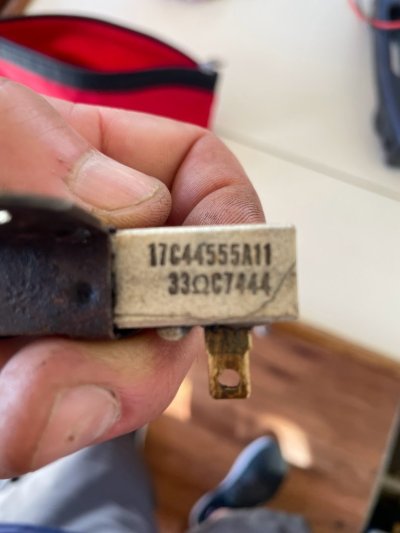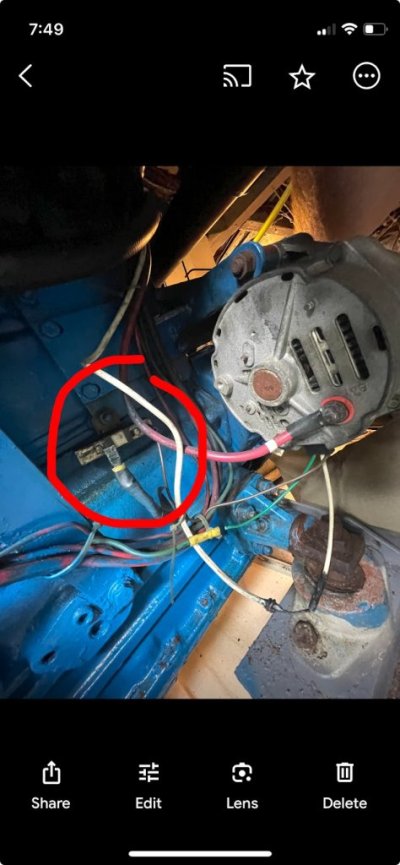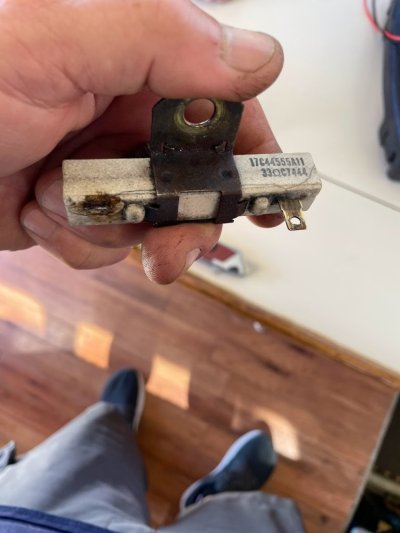PBJim
Newbie
- Joined
- Feb 13, 2023
- Messages
- 4
- Vessel Name
- Limited Edition
- Vessel Make
- Californian 34
Hi All - I've been unable to locate any similar archived posts and I already spoke with and sent pics to TAD to find a replacement part. TAD said it was an aftermarket part, not original to engines, and they were not certain what it was and what to recommend for replacement. The part looks to be original as it's identical on both engines with similar aged appearence and paint, but who knows what's been changed over 46 years. I'm certain somebody on this forum has more knowledge than my 12 months of diesel engine experience caring for these twin Perkins. I will attach several photo's...the part in question is a 33ohm (maybe some kind of thermal resistor?) and connects to the engine block via a bolt. It has one lead connected from the alternator and the other lead connected to the starter solenoid. I'm having difficulty tracing where it then goes but it appears to operate my engine alarm horn mounted in the engine room. I should also mention I noticed the tab and wires broke off and hanging. Funny thing is the horn would still sound when cranking the engine and shut off when the engines started. I was able to file enough of the old tab to reconnect the wires but when I do this the engine alarm no longer works. I found similar 33ohm resistors on the web but the wattages are all varied. My concern is if this is part of my overheating alarm system, I want to get the correct replacement as I'm not sure how to test? The engines sit in a 1978 34' Californian if that helps...
Thank you for any guidance.
Thank you for any guidance.



